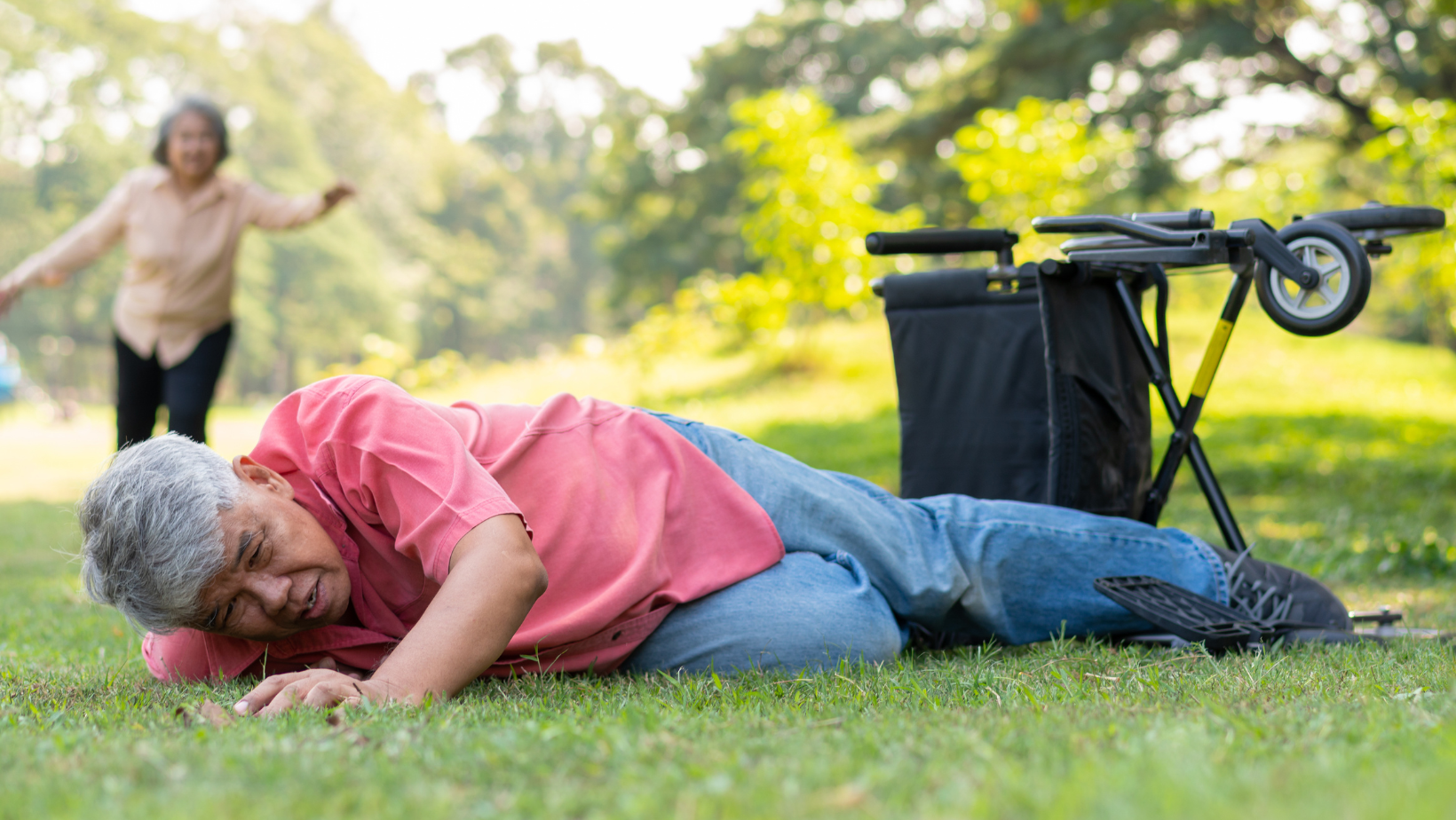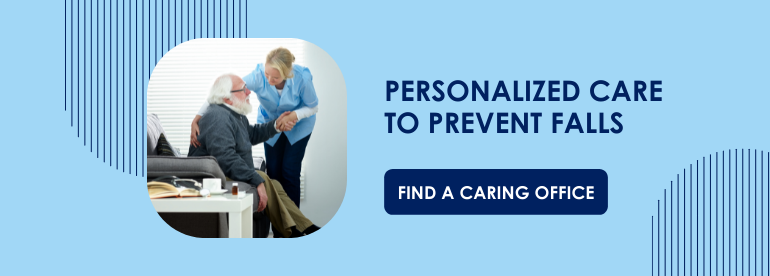As we age, our risk of falling increases due to weakened muscles, decreased balance, and other factors. In fact, 1 in 4 seniors fall each year, making it a common occurrence among older adults. These falls are one of the leading causes of injury for adults over age 65.
It can be frightening when a senior falls, and many people may not know what to do after the accident. A timely response is critical after a fall, and it could save a senior's life. If you are a family caregiver or have aging loved ones, it’s important to learn what to when a fall happens.
How to Help a Senior Who Has Fallen
The following steps can help guide you after a senior falls.
1. Assess the Situation
After a senior falls, the first thing you need to do is assess the situation. If the senior is unresponsive, call 911 immediately. If the senior is responsive, here are some questions that can help guide your assessment.
- Did they hit their head?
- Is there blood? If so, where and how much?
- What hurts?
- Is there evidence of a broken bone?
- Do they feel like they could get up on their own?
Immediately call 911 if the senior has been badly injured or feels like they cannot get up on their own. While help is on the way, try to keep the senior calm and comfortable.
However, a senior may feel confident that they can get up on their own. If there are no obvious signs of serious injury, you can assist them to their feet. We will walk through in the next section.
It’s also important that you feel confident in your ability to assist. By trying to help, you could actually injure yourself. Know that emergency medical service providers are trained to assist seniors after a fall. So you can always reach out if you don’t think you can safely help.
RELATED CONTENT: Injuries & Aftermath — What Can Happen After an Elderly Fall
2. Help the Senior Get Up
Work with the senior to help them get to their feet. You should never do all of the lifting. This can put you and the senior at risk of further injury. Watch the video below to learn how to assist a senior in standing up after a fall.
3. Evaluate for 24 Hours
After a senior gets up, they might act perfectly fine. However, some seniors could be hiding the pain of an injury because they want to maintain their independence. Or they are embarrassed about the fall.
Additionally, some pain or stiffness might not occur for a few hours or even overnight. Monitor the senior for about 24 hours to make sure they are alright. If your loved one is living independently, stay at their home or invite them to stay with you during this period. If they live in a nursing home or assisted living community, there will be staff on hand to help.
However, if a senior does need medical attention, take them to the emergency room or call their primary care doctor.
4. Notify Family Members
A senior’s loved ones should be informed about the fall and any injuries. And this doesn’t just include loved ones living with the senior or nearby. Family members living across the country may want to be informed about the fall and how their loved one is doing. A serious fall can often spark family discussions about their loved one’s well-being and safety.
5. See Primary Care Doctor
You should notify the senior’s physicians, caregivers, and any other relevant healthcare professionals. Then, take the senior to see their primary care physician for a quick checkup to discuss any concerns you may have. For example, la change in muscle weakness, fatigue, or shuffling of feet. A doctor can also help address any medical risk factors for falling — like vision problems, medications, health conditions, and more.
RELATED CONTENT: Essential Medical Evaluations After a Fall
6. Prevent Future Falls
Finally, you can help prevent future falls in your loved one’s home through a thorough safety assessment. Look for tripping hazards, like loose cords or changes in floor height. Make sure the lighting is good so your loved one can clearly see where they are walking. By making minor adjustments to the home environment, you can help your senior prevent some falls at home.
For a free professional home assessment, reach out to your local Caring team.
Your loved one may also need more to help keep them safe at home, especially if they have fallen before. A doctor may recommend a fall prevention device — like a cane, walker, or wheelchair — to help a senior get around safely. You might also need major home renovations, like installing grab bars, a ramp, or stair lift.
It might also be time to consider professional caregiving services to ensure your loved one always has someone at their side. To learn more about how our caregivers help seniors remain safe at home, reach out to your local Caring team.


